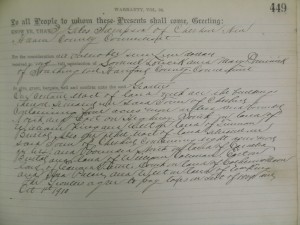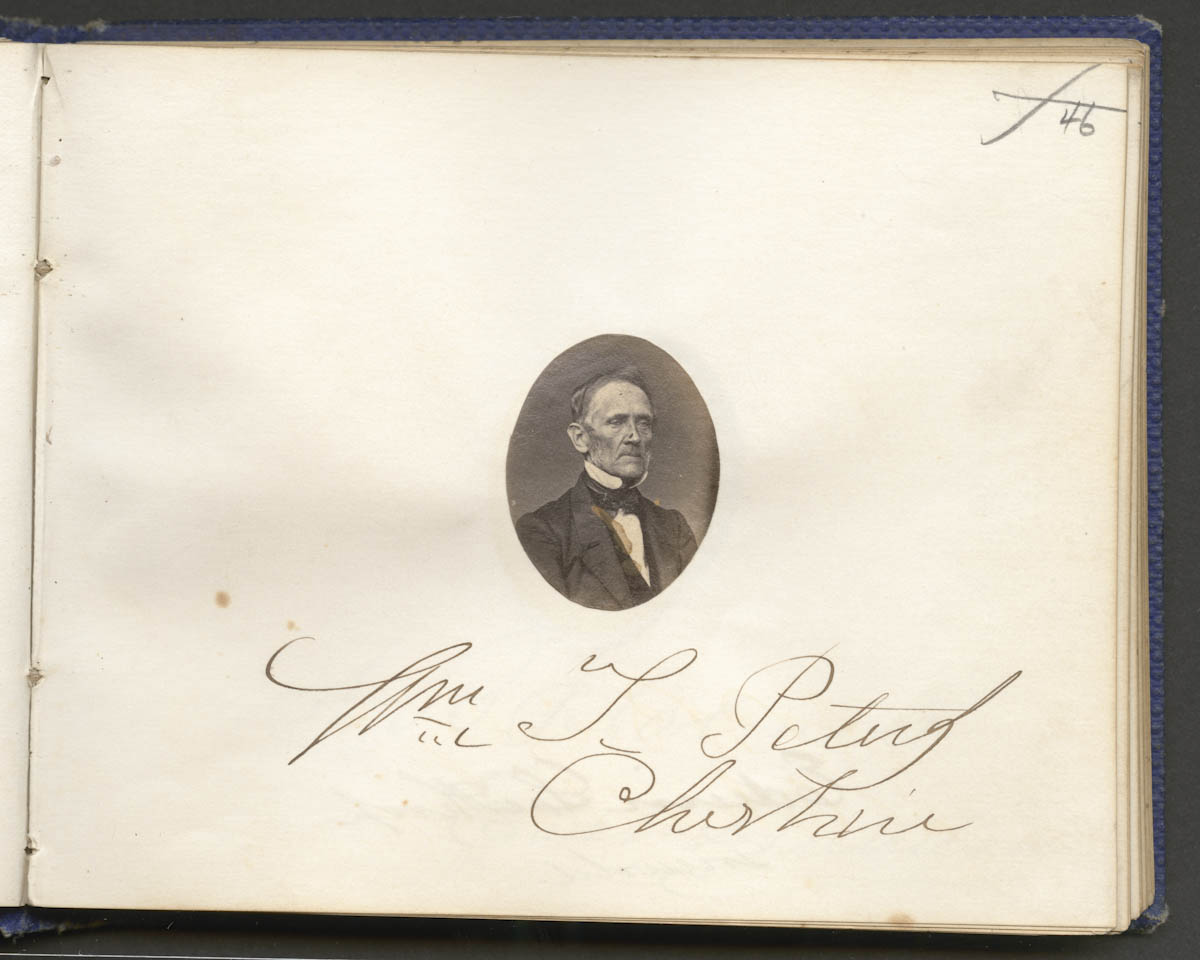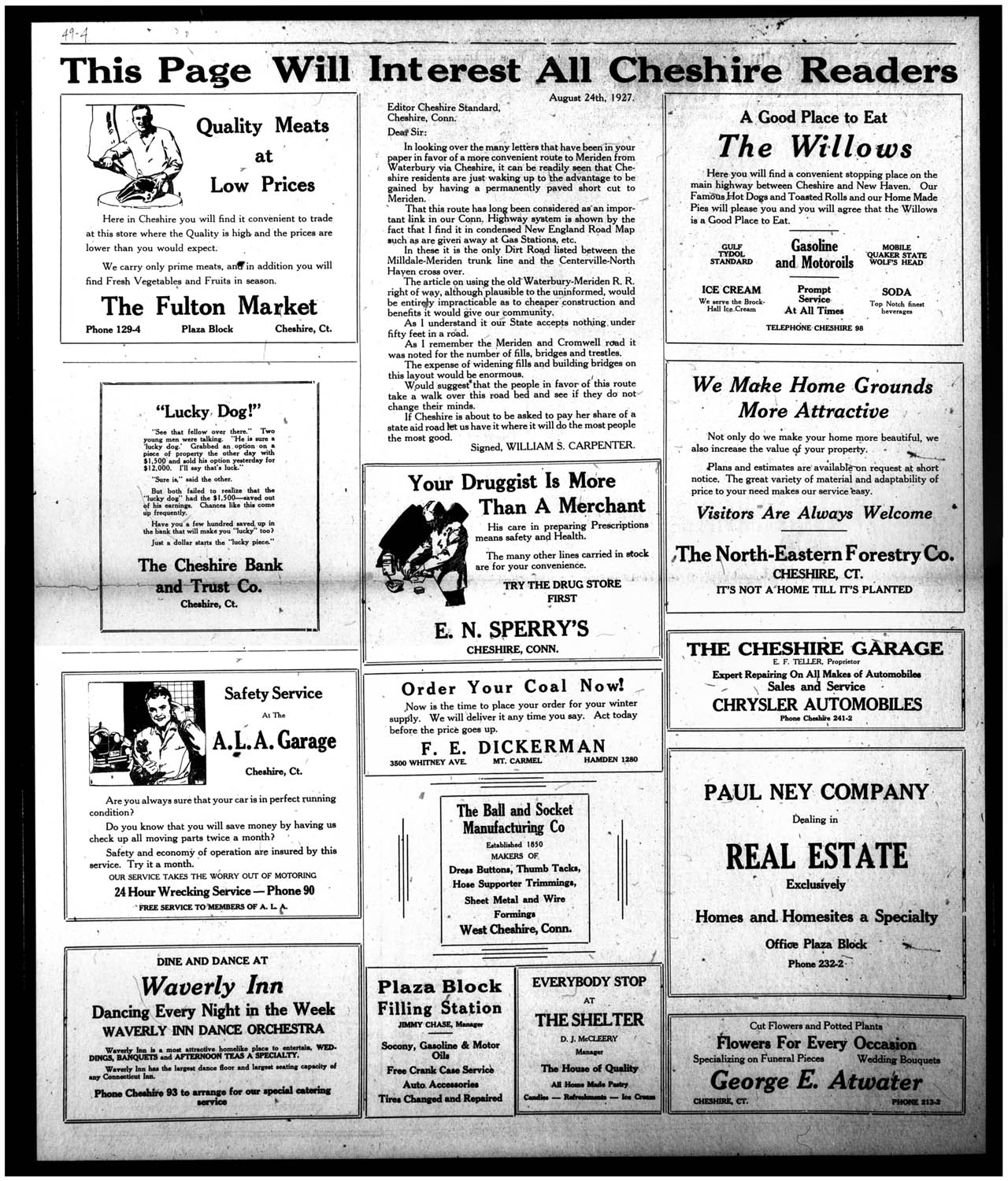In many ways, Prince Freeman was the first ancestor I heard call. I know, that sounds crazy right? Being called by an ancestor. But over the many years I have been researching the lives of African and African descended people in Cheshire, of telling their stories, I have realized how profoundly I believe in a power greater than myself. It is this power that calls me to tell their stories. To find their voices. As long as I stop to listen.
My mentor, Dr. Warren Perry, taught me this. Dr. Perry is an an African Diaspora Archaeologist at Central Connecticut State University. When I first stumbled across the names of captive African men and women in Cheshire I rushed to see Warren. I babbled about all that I had found and he just smiled at me, and nodded. He knew this, he taught this, I had heard this in his classes, but I was just beginning to understand this. I kept digging and kept finding and kept telling. And Warren kept smiling, his grin growing bigger with each discovery. It wasn’t that the things I was finding were “new and exciting”, though they were, it was that I think he realized each new discovery I made brought me one step closer to seeing my calling.
Warren watched my interest grow, knowing the ancestors guided my way, but let me learn this on my own. Every new fact I uncovered, every name I spoke aloud, the more I could hear and see. It was when I was doing some land record research that the call became crystal clear. My great-grandparents came to the United States from Italy in 1908. They went first to family in Indiana and then came to Connecticut in 1909. In 1910, my great-grandmother, Guiditta Maria Filomena Luca Dominello and her brother, Salvatore “Samuel” Luca bought 13 acres of land on Wallingford Road. This is where my grandmother was raised, my mother and all my cousins. I spent a large portion of my childhood “down the house”.
 As I looked at those land records, the warranty and deeds, dating from 1910, my jaw dropped. “Down the house” – the land and house where four generations of my family had lived, had been cleared, built and sold by a free African-American man named Giles Sampson. I had played hide and seek in Giles’ house. My mother and grandmother had worked in gardens that Giles had cleared. My great-grandmother had known Giles.
As I looked at those land records, the warranty and deeds, dating from 1910, my jaw dropped. “Down the house” – the land and house where four generations of my family had lived, had been cleared, built and sold by a free African-American man named Giles Sampson. I had played hide and seek in Giles’ house. My mother and grandmother had worked in gardens that Giles had cleared. My great-grandmother had known Giles.
I suddenly began to see all the signs I had missed my entire life. I knew the ancestors had always been there, making themselves known to me, though I just couldn’t see it.
My very first archaeological dig was in Essex with Art Sides. We were digging the remains of an 18th century home and found the usual nails, pieces of ceramics, and the other day to day debris left behind. On our last day, we were digging around the base of the chimney and found some odd items. There was a collection of oyster shells, bent nails, bones and pieces of glass. We chalked this up to the remnants of a meal left behind by the chimney builders. I remember each of those items, how they looked, how they felt in my hands. I was intrigued by those items, they seemed to resonate on some level I didn’t quite understand.
Twenty years later, after a conversation with Warren and Janet I realized what we had found and why they had resonated so strongly. Those items were not meal remnants or even plain old refuse, they were a nkisi (plural minkisi) a traditional West African spirit bundle. Janet had been studying these and their significance in North American captivity. Tom Gidwitz explains in “Freeing Captive History“:
Minkisi (singular: nkisi) are potent charms. Bundled in cloth or grouped in a pot, they summon spirits to heal, curse, or protect from harm. Minkisi can be objects of iron, a substance considered especially powerful, or incised stones, coins, nails, or buttons — items so seemingly everyday that New England archaeologists long mistook them for trash.
Captives hid minkisi in or near chimneys or under doorways where spirits or their intended target would pass by. They cached them under the corners and the center of rooms to replicate the Bakongo cosmogram, a schematic drawing that depicts the world as a cross with the realm of the living above the cross’s horizontal line, the realm of the dead below. At the center a smaller circle represents water that separates the two worlds. White pottery or shiny objects such as glass, quartz crystals, or even coal, can summon spirits to cross the shimmering water.
The discoveries continued. I saw all the places where my life intersected with those places of the ancestors. As a child, my parents had a dollhouse store in the Watch Factory Shops. Behind the Watch Factory is Hillside Cemetery, Cheshire’s oldest burying ground, established in 1726 by the Reverend Samuel Hall. My sister and I spent a lot of time at our parents store. We (or maybe it was just I, my sister was NOT a history geek) spent a lot of time in Hillside as well. There was an empty corner in the old part of the cemetery when I was a kid. I remember a few stones being there, kind of lonely. That was where the captives and their descendants were buried. That is also a post for another day.
After each of these events I rushed to see Warren & Janet Woodruff, Warren’s right hand and protégé. Every time Warren would smile his big grin and tell me it was all there, we just needed to open our eyes to see it. As time went on, I learned how to see and how to listen, and as I did the stories began to tell themselves.
So that is how the stories come. They allow themselves to be found when they are ready to be told – and when I am listening. And that is key – I have to listen. When I explained this all to Warren, he smiled and nodded, this was nothing new to him. He had heard the call long ago. Warren is the pied-piper, drawing the called to him, and opening their eyes and ears to the stories.



